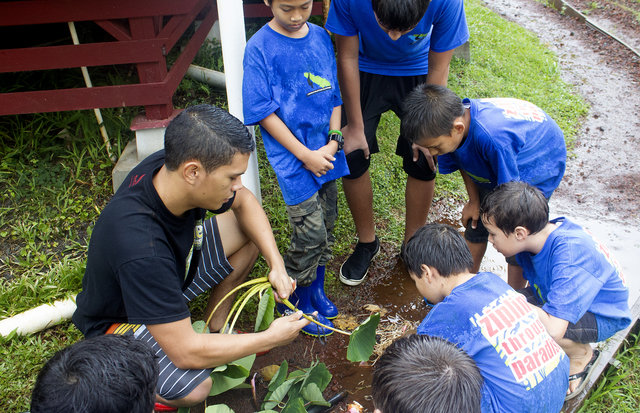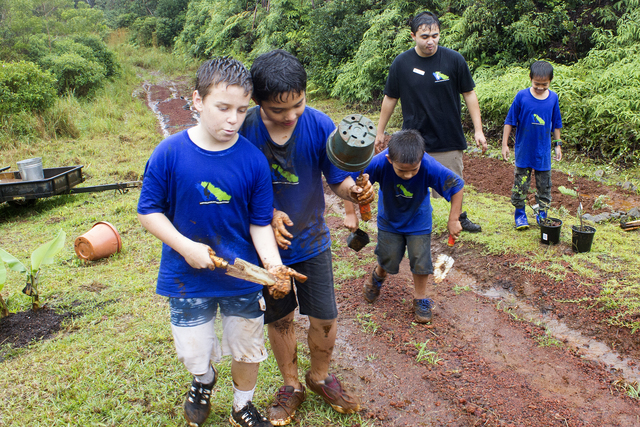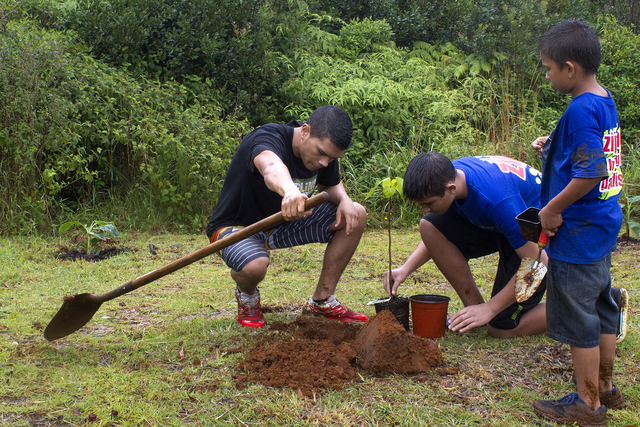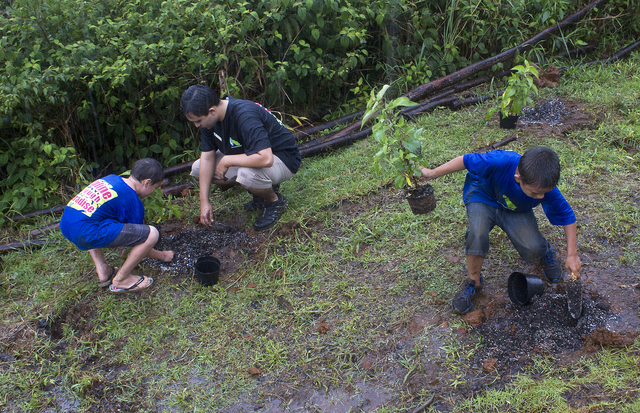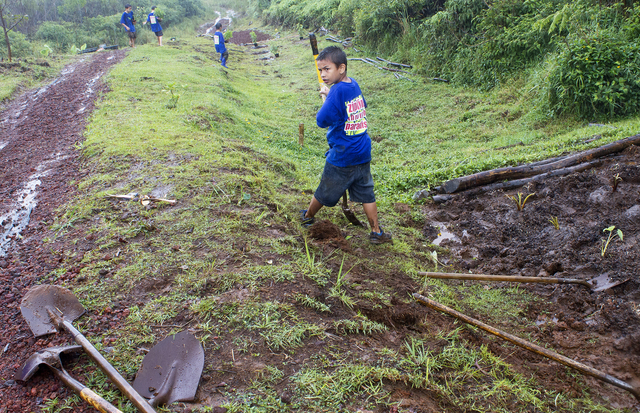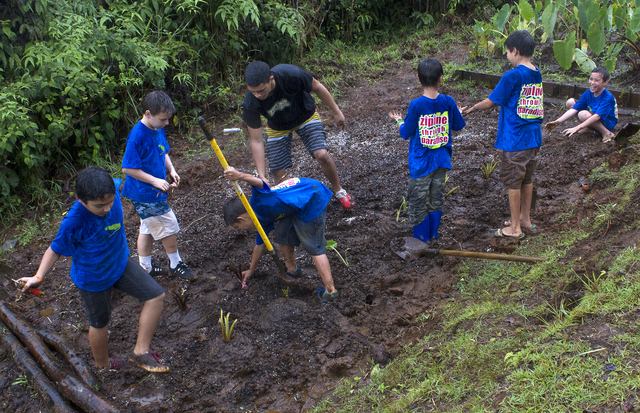The zipline stations were empty on Saturday morning at KapohoKine Adventures in Paukaa. No surprises there: it was raining and overcast — not ideal weather for outdoor adventures. ADVERTISING The zipline stations were empty on Saturday morning at KapohoKine Adventures
The zipline stations were empty on Saturday morning at KapohoKine Adventures in Paukaa. No surprises there: it was raining and overcast — not ideal weather for outdoor adventures.
Unless you were one of seven keiki kane in the morning’s Nohona Hawaii program.
Their shirts were sopping wet, and their shoes were covered in reddish clay. Fresh off a morning hike, seed gathering excursion, and native-plants planting session, they piled out of a white KapohoKine van and into a covered pavillion on the property that had a perfect view of Wai‘alae Falls, followed by Nohona Hawaii kumu Ben Catcho and Pa‘ele Kiakona.
Catcho and Kiakona started the Nohona Hawaii program earlier this year as a way to give guests more exposure to Hawaiian culture — to give meaning and depth to the landscape for visitors and locals alike.
“It’s very easy to skip some of the meat of Hawaiian culture,” Catcho said. With people visiting from around the world, Kiakona said, the program was a way to expand the culture’s reach.
And for the co-leaders, both fluent Hawaiian speakers, helping keiki learn about their culture was equally important. The senior class from Kamehameha Schools, of which Catcho and Kiakona are alumni, had come to do a service project, prepping garden beds for planting, while a group of homeless children from Oahu had been flown to the Big Island to help plant ipu.
Saturday’s session was part of an 8-month program for students in Na Pua No‘eau, the University of Hawaii at Hilo’s Center for Gifted and Talented Native Hawaiian Children. Some were students Catcho had taught some years ago, when the kids were in preschool at Punana Leo.
“This is something their parents wanted them involved in. They’ve been waiting for a program like this,” Catcho said.
Though Nohona Hawaii is ultimately about teaching, there are no books involved. It’s all outdoors and hands-on, intended for those keiki who learn better in such a setting. The owners of KapohoKine have been “super supportive” of the effort, Catcho said. He and Kiakona hope to expand its offerings in the future and involve more schools.
The Saturday group gathered around Kiakona as he showed them how to prepare taro plants for replanting, and explained the difference between poi and paiai. The rain continued, but nobody asked to go back under the pavillion.
During the previous session, they’d prepped the taro bed, tilling the ground six times before it was finally ready to be a garden. In an adjacent bed, the keiki dug holes in the soupy dirt to plant mamaki. Later, Catcho said, they’d harvest the green berries from the plant.
Being outside “is more of an eye opener for them,” he said.
For more information, visit http://on.fb.me/1TmkBZV.
Email Ivy Ashe at iashe@hawaii
tribune-herald.com.


